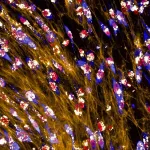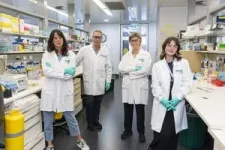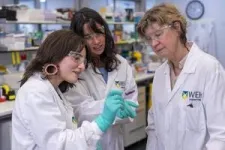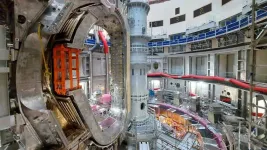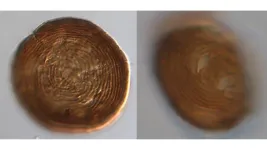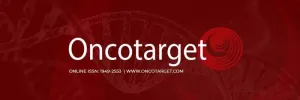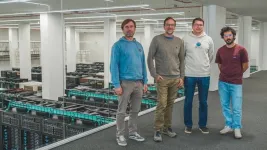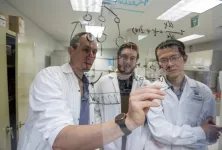(Press-News.org) New study from the University of Sheffield identifies a novel mechanism employed by breast cancer cells to survive in the challenging environment within tumours
The findings provide a new insight into a previously unknown mechanism of cancer cell survival and may offer a new target for developing therapies
The research found breast cancer cells take advantage of nutrients in the extracellular matrix in times of nutrient starvation
Energy starved breast cancer cells ingest and consume their surroundings to overcome starvation, a new study has found.
The research, conducted by scientists at the University of Sheffield and published today (Tuesday 16 January 2024) in PLOS Biology, provides a new insight into a previously unknown mechanism of cancer cell survival and may offer a new target for therapy development.
Cells in the breast, including tumour cells, are embedded in a meshwork called the extracellular matrix (ECM). Nutrients are scarce in the ECM, due to the limited blood flow, and become even scarcer as tumour cells grow.
Lead researcher Dr Elena Rainero, from the University of Sheffield’s School of Biosciences, and her team investigated how tumours continue to grow - despite the lack of nutrients - and how the tumour cells supply themselves with the raw materials to support their growth.
“This study identified a novel mechanism employed by breast cancer cells to survive in the challenging environment they are in within tumours,” said Dr Elena Rainero, from the University of Sheffield.
“As sources of food are scarce, cancer cells gain the ability to eat and digest components of the matrix around them. We have identified a key metabolic process that the cells need to be able to take advantage of the matrix, which could represent a novel therapeutic target.”
During the study, which was funded by Cancer Research UK, Dr Rainero and her team seeded breast adenocarcinoma cells into either collagen (a major component of the ECM) or a commercial matrix preparation, or onto plastic, with or without certain critical amino acids.
Without those amino acids, cells on plastic fared poorly compared to those in one or the other matrix. Similar results were seen with other matrix models - the tumour cells were able to overcome the reduction of amino acids when surrounded by matrix.
Next, by fluorescently labelling the collagen and watching its journey through the cell, the authors showed that the cells took up ECM and broke it down in digestive compartments called lysosomes; when the ECM was chemically treated to cross-link its components, the cells were unable to ingest it.
Further investigation indicated that uptake was through an ingestion process called macropinocytosis, in which the cell engulfs large quantities of extracellular material.
Analysis of their metabolome indicated that procurement and breakdown of two amino acids, tyrosine and phenylalanine, dominated the metabolic changes in response to starvation. The Sheffield scientists noted that these two can serve as the raw material for energy production through the mitochondrial tricarboxylic acid (Krebs) cycle.
When they knocked down High Pressure Decorative Laminate (HPDL), a central enzyme in the pathway from phenylalanine to the TCA, cell growth was significantly impaired.
Blocking or reducing expression of HPDL, or the macropinocytosis promoter PAK1, reduced the ability of tumour cells to migrate and to invade surrounding tissue.
Dr Rainero added: “Our results indicate that breast cancer cells take advantage of nutrients in the extracellular matrix in times of nutrient starvation, and that this process depends on both macropinocytosis and metabolic conversion of key amino acids to energy-releasing substrates.
“HPDL-mediated metabolism of tyrosine and phenylalanine could represent a metabolic vulnerability of cancer cells thriving in a nutrient deprived microenvironment.”
Additional information
Peer-reviewed, Experimental study, Cells
Contact: For further information please contact: Amy Huxtable, Media Relations Officer, University of Sheffield, 0114 222 9859, a.l.huxtable@sheffield.ac.uk
To view the full paper, please visit: http://journals.plos.org/plosbiology/article?id=10.1371/journal.pbio.3002406
Press-only preview: https://plos.io/3RDthS3
Image Caption: Breast cancer cells (in blue) eating extracellular matrix (yellow). The bright white spots inside the cells are extracellular matrix components that are being digested by the cells, for them to obtain nutrients to support their growth.
Image Credit: Montserrat Llanses Martinez (CC-BY 4.0, https://creativecommons.org/licenses/by/4.0/)
Image URL: https://plos.io/46hOjKf
Citation: Nazemi M, Yanes B, Martinez ML, Walker HJ, Pham K, Collins MO, et al. (2024) The extracellular matrix supports breast cancer cell growth under amino acid starvation by promoting tyrosine catabolism. PLoS Biol 22(1): e3002406. https://doi.org/10.1371/journal.pbio.3002406
Author Countries: United Kingdom, Singapore, France
Funding: M.N., B.Y. and E.R. are funded by Cancer Research UK (C52879/A29144). M.L.M. is funded by Sheffield/ARAP PhD program. F.B. is funded by 'ARC pour la recherche sur le cancer' Foundation and AMIDEX AMX-2-CE-03 Chaire d'Excellence. The funders had no role in study design, data collection and analysis, decision to publish, or preparation of the manuscript.
END
Energy-starved breast cancer cells consume their surroundings for fuel
2024-01-16
ELSE PRESS RELEASES FROM THIS DATE:
How did free wi-fi help unlock Hanoi wet markets’ mysteries?
2024-01-16
Researchers at the Alliance of Bioversity International and CIAT and their collaborators have been working on how to harness the power of the estimated 549 million Wifi hotspots worldwide, resulting in a project that used anonymized data gathered from free Wi-Fi to better understand the impact of COVID-19 on Hanoi’s wet markets during the first stage of the Covid-19 pandemic.
In the paper “Using free Wi-Fi to assess impact of COVID-19 pandemic on traditional wet markets in Hanoi” published in December 2023 in the scientific journal Food Security, the researchers analyzed and interpreted mobile device tracking ...
Smooth operation of future nuclear fusion facilities is a matter of control
2024-01-16
As researchers around the world work to develop viable alternatives to fossil fuels, the prospect of nuclear fusion—harnessing the same energy-generating reactions that power the sun—has grown increasingly attractive to private equity firms.
In 2022, the U.S. Department of Energy launched a partnership with investors in the private sector to accelerate the development of fusion energy, in part through the development of a fusion pilot plant, or FPP, in the United States.
The FPP and ITER—the world’s largest nuclear fusion reactor, currently being ...
Microfossils shed light on the long fossil record of euglenoids
2024-01-16
Hiding in the shadows, euglenoids are a fascinating group of single-celled protists that are neither plant nor animal. Plants photosynthesize, and animals eat. Euglenoids do both. Spiraling along the murky bottoms of shallow fresh-water ponds with their long flagella, they eat organic goop, while also using their chloroplasts to convert CO2 and water with light into sugars. Because of this in-between status, euglenoids have been placed close to the very base of the eukaryotic branch on the tree-of-life that includes ...
Amnesia caused by head injury reversed in early mouse study
2024-01-16
WASHINGTON - A mouse study designed to shed light on memory loss in people who experience repeated head impacts, such as athletes, suggests the condition could potentially be reversed. The research in mice finds that amnesia and poor memory following head injury is due to inadequate reactivation of neurons involved in forming memories.
The study, conducted by researchers at Georgetown University Medical Center in collaboration with Trinity College Dublin, Ireland, is reported January 16, 2024, in the Journal of Neuroscience.
Importantly for diagnostic and treatment purposes, the researchers found that the memory loss attributed to head injury was not a permanent pathological event driven by ...
Domesticating plants impacts their microbiome, study finds
2024-01-16
New research led by the University of Oxford indicates that human domestication of crops can alter the communities of microorganisms that are associated with plants. Intriguingly, independent domestication events were found to have similar impacts on the plant microbiome. The results have been published today in Current Biology.
Lead researcher Dr Riccardo Soldan (Department of Biology, University of Oxford) said: 'Our study provides evidence that regardless of where and how domestication took place, domesticated ...
Reductive carboxylation of glutamine as a potential target in AML
2024-01-16
“Identification and validation of novel and targetable metabolic weaknesses in AML is ongoing.”
BUFFALO, NY- January 16, 2024 – A new editorial paper was published in Oncotarget's Volume 14 on December 1, 2023, entitled, “Reductive carboxylation of glutamine as a potential target in acute myeloid leukemia.”
In this new editorial, researchers Alessia Roma, Lawrence D. Goodridge and Paul A. Spagnuolo from the University of Guelph discuss acute myeloid leukemia (AML) — an aggressive cancer of the blood and bone marrow ...
Identity concealment in sexual minority men may have impeded mpox care
2024-01-16
ITHACA, N.Y. – Openly gay, bisexual and other sexual minority men were more likely than those who conceal their sexual orientation to seek care for mpox during a global outbreak of the disease last year that disproportionately affected their community, researchers from Cornell University and the University of Toronto found.
It wasn’t necessarily concern over being “outed” that kept some sexual minority men from seeking care for the disease, formerly known as monkeypox. According to the researchers, it was an information gap, partially attributable to separation from community due to identity concealment.
“The resource knowledge and community-connected ...
BSC predicts that global-mean temperature could reach the 1.5ºC warming level threshold in 2024
2024-01-16
2023 has just been confirmed as the hottest year on record, with global average temperatures exceeding pre-industrial conditions by 1.48°C, as stated by the Copernicus Programme of the European Union. Climate scientists from the Barcelona Supercomputing Center-Centro Nacional de Computación (BSC-CNS), based on the BSC decadal forecast system, were capable of predicting a year ago that 2023 had a high probability of being the warmest year on record.
After the record-smashing conditions in 2023, the imminent question is how the year 2024 and the following years will ...
New study aims to unlock secrets of the human brain
2024-01-16
The inner workings of the human brain are a gradually unraveling mystery and Dr. Richard Naud of the University of Ottawa’s Faculty of Medicine has led a highly compelling new study that brings us closer to answering these big questions. The study’s results have important implications for theories of learning and working memory and could potentially help lead to future developments in artificial intelligence (AI) since AI developers and programmers watch the work of Dr. Naud and other leading neuroscientists.
Published in Nature Computational Science, the study tackles the many-layered mystery ...
Pudukotai Dinakarrao studying ways to protect autonomous vehicle supply chains
2024-01-16
Sai Manoj Pudukotai Dinakarrao, Assistant Professor, Electrical and Computer Engineering, received funding for the project: "Cyber Sentinel: Safeguarding Autonomous Vehicle Supply Chains against Backdoors in Hardware."
Pudukotai Dinakarrao is working with University of Virginia researchers who aim to deploy a backdoor attack mitigation and avoidance approach for vehicles.
Haiying Shen, Associate Professor, Computer Science; Associate Professor, Electrical and ...
